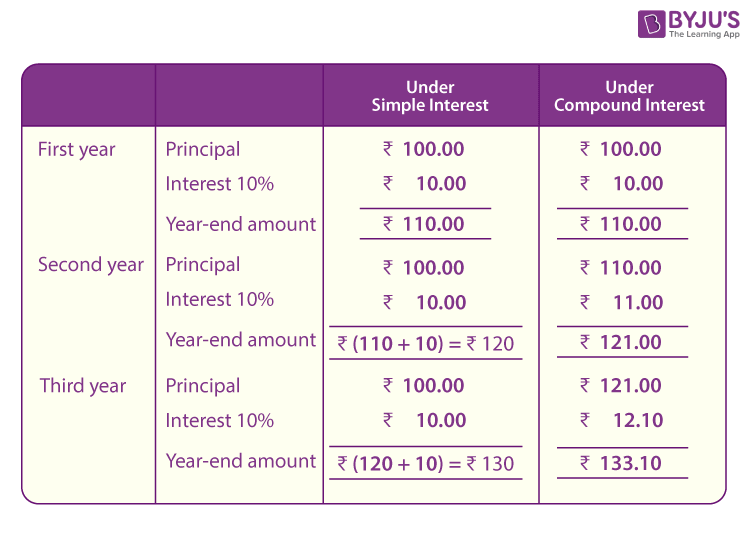

How to calculate simple interest for a loan?īecause simple interest is calculated regularly, individuals who repay their loans on time or in advance each month gain the most. Most online calculators, including IDFC FIRST Bank’s simple interest calculator, use it to evaluate the amount you will receive upon maturity.Ī is the total amount (principal + interest), P is the principal amount, r represents the rate of interest, and t stands for time. However, to calculate the overall gains due to simple interest, you need to use a different formula.

P stands for principal, R represents rate of interest, and T donates time. Simple interest on investments and loans is calculated using the formula: Paying interest relatively frequently advances the payoff date, which is one reason biweekly mortgages help debtors pay their mortgages off faster. This computation is also used in a few mortgages, the most notable of which is the biweekly loan. Why a savings account is better than stacking up cash at home? What is a simple interest in terms of a loan?Ĭar loans and short-term personal loans are the only loans that use the simple interest computation. How to open a savings account online with IDFC FIRST Bank? The rate of interest is always in terms of a percentage, so it is taken to be r/100. Simple interest is calculated by using the formula, principal x rate x time ÷ 100. Banks charge various sorts of interest, one of which is simple interest.Īfter understanding what is simple interest, one may want to know what the formula for simple interest is. When we deposit money in a bank, the bank pays us interest on our investment. Interest is always applied to the initial principal amount under the simple interest method, and the rate of interest is the same for each time cycle. Simple interest is a straightforward and easy technique for calculating interest in money. The principal amount remains constant in simple interest.
Simple interest is a technique used to calculate the proportion of interest paid on a sum over a set time period at a set rate. Simple interest doesn't compound, which means a creditor will only pay interest on the principal amount and a borrower would never have to pay more interest on the previously accumulated interest. Normally, the banks pay interest on half yearly basis, but financial institutions have the policy of paying interest quarterly.Simple interest is based on the principal amount of a loan or the first deposit in a savings account.

At the end of the conversion period the interest is compounded like: Conversion Period The time interval between two interest payment period is known as Conversion Period. Here, interest is to be paid on the principal as well as the interest accrued during the loan term. In this method we sum up the interest earned in the previous years to the initial principal, thus increasing the principal amount, on which the interest for the next period is charged.
INTEREST AND PRINCIPAL DEFINITION PLUS
Original principal plus accumulated interest of prior periods. Definition of Compound InterestĬompound Interest is the interest which is computed as a percentage of revised principal, i.e. One thing should be kept in mind is, the more the money and periods, the higher will be the interest. If we add up the principal and interest, then it will be known as Amount. 300 as interest, for keeping the amount with yourself. 1000 from your friend 10% per annum for 3 years, then you have to return Rs.1300 to your friend at the end of 3rd year Rs 1000 for Principal and Rs. The following formula is used to calculate the amount of interest:įor Example: If you borrow Rs. The most common example of Simple Interest is the car loan, where interest has to be paid only on the original amount lent or borrowed. It is the easiest and fastest method to calculate the interest on the amount lent or borrowed. Interest is the price paid for the use of funds or income received from lending the funds. Simple Interest is the interest which is charged as a percentage of the original amount lent or Principal, for the whole borrowing period. Goes on changing during the entire borrowing period. Simple Interest refers to an interest that is calculated as a percentage of the principal amount.Ĭompound Interest refers to an interest which is calculated as a percentage of principal and accrued interest. Content: Simple Interest Vs Compound Interest So, here in this article, you will find the basic differences between Simple Interest and Compound Interest, which we have compiled after an in-depth research on the two terms. On the other hand, whenever the interest becomes due for payment, it is added to the principal, on which interest for the succeeding period is reckoned, this is known as compound interest. So, simple interest is the sum paid for using the borowed money, for a fixed period.


 0 kommentar(er)
0 kommentar(er)
